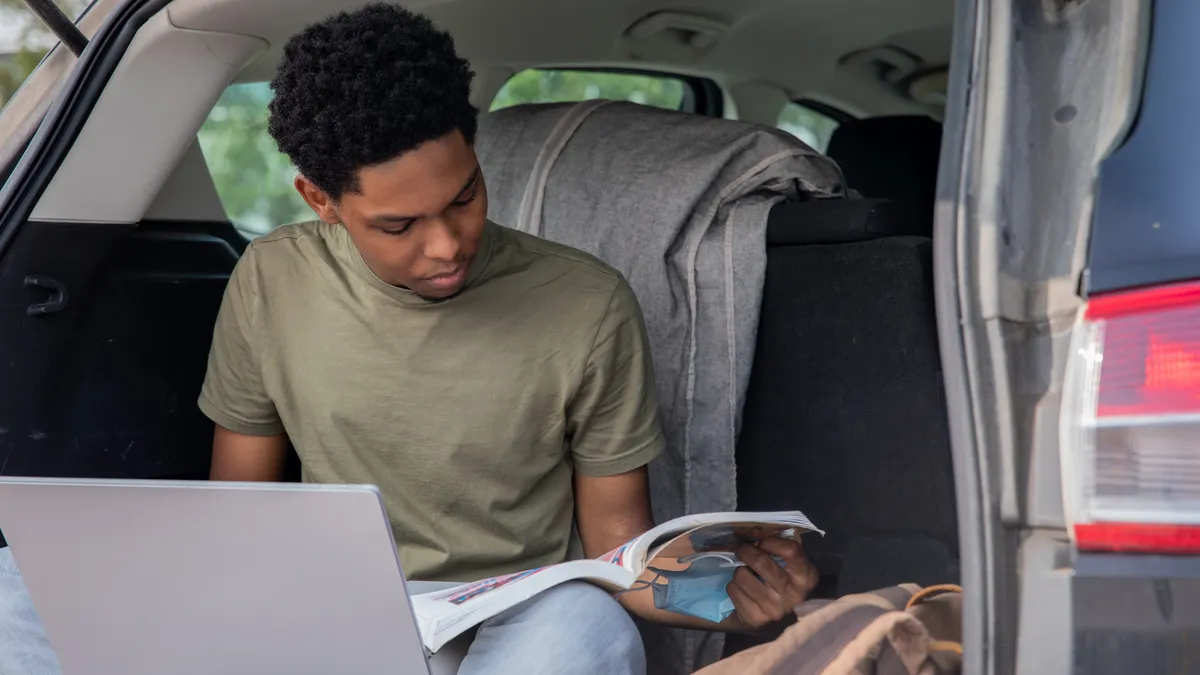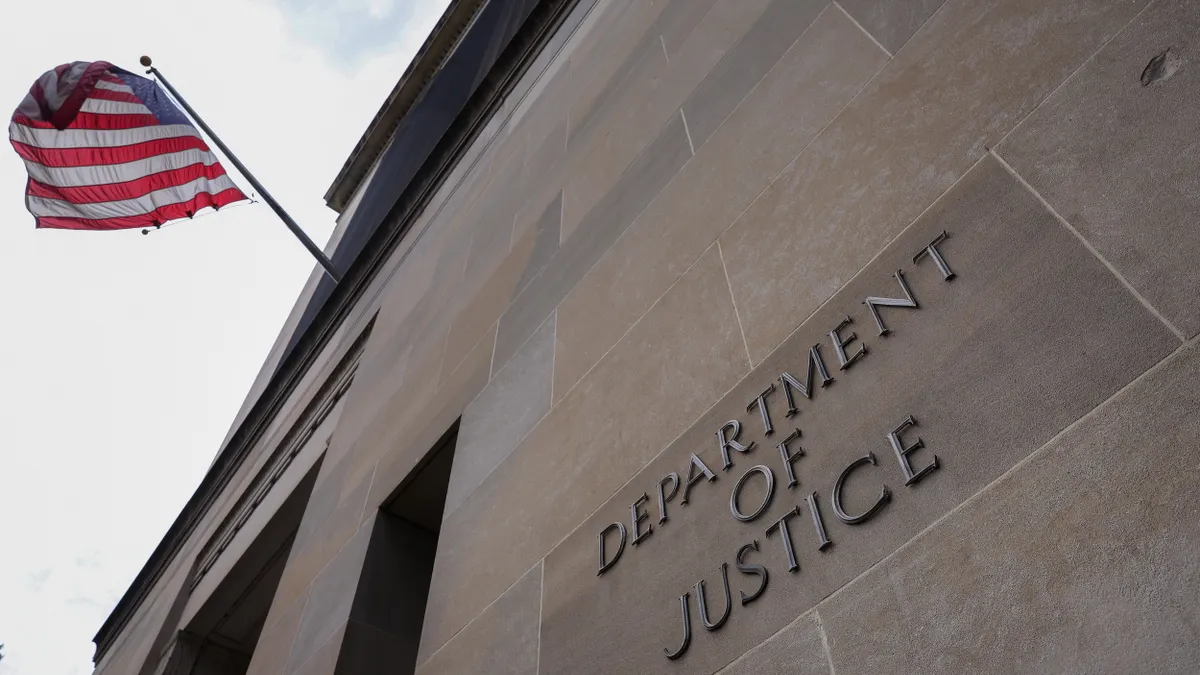When Congress passed the American Rescue Plan in 2021 with $800 million earmarked for the Homeless Children and Youth program, it was the most one-time federal funding homeless students and their families, advocates and liaisons had ever been promised.
Up to that point, although hundreds of thousands of homeless students dropped off the grid during the pandemic or bounced from one temporary shelter to another, surveys showed billions of dollars in pandemic federal aid had barely reached these learners.
"The pandemic made the inequities in our education system even worse, especially for students experiencing homelessness," said U.S. Secretary of Education Miguel Cardona in a statement in April when announcing distribution of the $800 million to states. He added that districts and schools "must act with urgency" to meet these students' basic needs and provide educational opportunity.
However, despite the gusto with which the announcement was made, many districts awaiting the funds still did not receive them.
Some states, tasked by the department to distribute the funds quickly, followed a tiered competitive grant process that disqualified districts with fewer than 50 homeless students. It was the same competitive grant process used to distribute McKinney-Vento funding that routinely excluded certain districts prior to the pandemic.
That wasn't fair, said Frances Fuller, homeless liaison for Socorro Consolidated Schools in New Mexico, whose district couldn't apply for the first round. Socorro schools eventually received the second round of ARP funding in December 2021.
Socorro serves only 1,500 students, many of whom live in rural communities. The district's homeless student population can swing between 35 and 60 students, depending on the time of year. And in April 2021, when Fuller last requested to apply for McKinney-Vento funds, the district's homeless population count was at approximately 36, disqualifying Socorro schools from receiving the first round of ARP federal funding.
"We're not always going to have those numbers," Fuller said. "But that doesn't mean that we don't need resources."
More districts tap into aid
Fuller's frustration at her district not meeting the standard for federal homeless student funding is one that districts with lower homeless student numbers commonly face in accessing dedicated assistance.
At pre-pandemic funding levels, fewer than one in four districts received dedicated funding to identify and support homeless students, according to SchoolHouse Connection, a nonprofit that advocates for homeless student support and provides resources to programs, schools and families.
Even the first round of American Rescue Plan funding dedicated for homeless students was distributed through a competitive grant, which limited the number of districts receiving the money. In some cases, superintendents may have not even been aware their district would have benefited from applying, said Barbara Duffield, executive director of SchoolHouse Connection.
That changed when the Department of Education decided it would distribute homeless student funding through a formula rather than a competitive grant process for its second round in July, greatly expanding the number of districts eligible. Districts that would have received less than $5,000 through the formula could be grouped together to get the most bang for their buck.
Duffield said the process likely removed an awareness barrier for superintendents who hadn't previously thought McKinney-Vento funds could benefit their districts.
The most recent report from Duffield's organization, which collected data from 37 states, shows a 611% increase in the number of districts receiving dedicated funding for homeless students, with 6,324 districts that previously did not receive McKinney-Vento funds accessing federal homeless student funding in the 2021-22 school year. State increases range from 60% to 2300%. In the 2019-2020 school year, there were 4,497 McKinney-Vento recipients, according to SchoolHouse Connection.
As a result, many first-time recipients of dedicated homeless youth funding are able to allocate staff for McKinney-Vento students, establish after-school programs or ramp up identification efforts.
Federal funds reach first-time recipients
The second and only round of ARP funding Fuller's district received dedicated entirely to homeless students added up to $21,000. "So that's a lot to us," Fuller said.
With the additional funding, Socorro created an hourly case management position to help homeless students and their families access basic needs, which can include anything from gathering necessary paperwork for housing applications to accompanying families for appointments to find housing and helping them access clothing and medical care.
In Washington's Ridgefield School District, first-time McKinney-Vento funding is being used to support homeless students' mental health and to increase family engagement at events.
"Our focus this year is to build that piece up, because we see a lot of kiddos who are struggling with anxiety a lot these last couple years, especially with the COVID and whatnot," said Kataira Smith, McKinney-Vento district liaison for Ridgefield. "So I was trying to find a grant that can help support not only that piece, but our outreach with families."
Smith will be surveying the district's McKinney-Vento families prior to reapplying for the grant.
Fuller, however, fears her district won't be able to properly serve its homeless families if it doesn't qualify for the competitive grant in spring 2024 once the current formula funds run out.
That, in turn, would lead to homeless families leaving for areas that can better serve them, once more pushing the count of homeless students below 50 and again disqualifying Socorro from applying for federal funds.
McKinney-Vento applications expected to increase
Following a boom in districts receiving McKinney-Vento funds, Duffield expects an increase in applications for the grant after federal aid has dried up.
However, federal funding may not keep pace with the increased demand. "There was the only reason they [districts] weren't getting funds before," Duffield said. "It's because there just wasn't enough to go around."
There has already been a push — mainly by Democrats — on the federal level to sustain the $800 million for homeless students. Up until now, it has only been a one-time investment and was greater than funding for homeless students in the past decade combined, according to Patricia Julianelle, senior strategist for program advancement and legal affairs at SchoolHouse Connection.
“And that’s really part of the vision for what all districts — certainly more than one in four — ought to have: specific funding to support this population,” Duffield said.






 Dive Awards
Dive Awards













